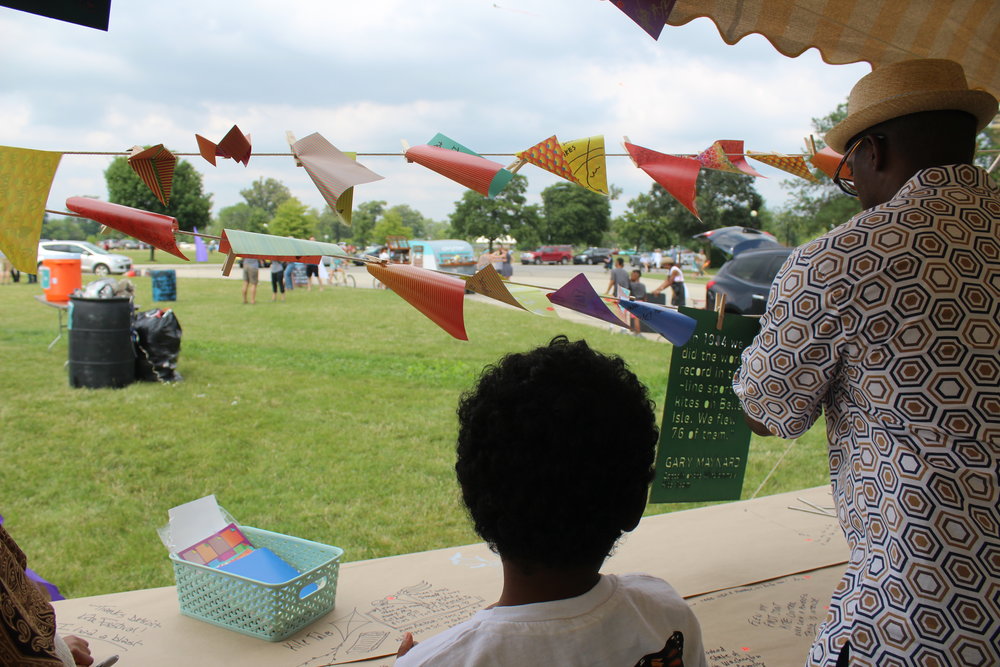By Dylan Eli Welch, 13F
For my summer internship through Ethics and the Common Good, I traveled to Detroit to support the inaugural Detroit Kite Festival. Inspired by kite festivals she went to when she was younger, the Detroit Kite Festival was created by friend and Hampshire alum Margo Dalal. Margo and the festival team partnered with several organizations, including the Detroit Institute of Arts, to provide a full day experience centering the kites as a medium for uplifting community, inspiring creativity, encouraging play, and celebrating history. On July 15th, people of all ages and backgrounds, including my mother and one of her sisters, flocked to Belle Isle, the largest city-owned park in the country.
I hopped on the bandwagon in February 2017 and began to work full-time on a contributing project to the festival during my summer internship. Although I’d never flown a kite, I resonated with the connections being made between place, memory, and narrative. Working with a group of collaborators, we designed and built a pop-up museum exhibit focused on the history of kite flying in Detroit and its living memories today. The concept for the pop-up drew from Dolores Hayden’s work, The Power of Place: Urban Landscapes as Public History, which considers how personal and collective memories connect people to place through remembered senses and emotions. I dove into the Detroit Free Press online archives to learn more and found a rich store of records. Some articles I found detailed aeronautical experiments involving kites from 1896 while others summarized the results of municipal kite competitions held throughout the 20th century in neighborhood parks. Between these accounts and several connections I made with local “kite enthusiasts,” I set to work designing the educational exhibit. With the support of another Hampshire alum, Erika Linenfelser, we produced an interactive exhibition that not only shared educational and historical materials, but also offered an opportunity for people to place themselves within that living historical narrative through the mapping of their own experiences flying kites, which brought the exhibit into the heart of the present. Afterwards, the exhibit was uploaded to the festival’s website, making it accessible for future reference and reflection. My hope is that the project’s digitization will contribute towards the preservation of a collective or common memory of the festival.
I still consider this a filled-to-the-brim kind of learning experience. It got me thinking about what it might mean for me, a suburbanite, to create in conversation with Detroit’s people, places, and history. The exhibit challenged me to ground the festival within the city’s resilient stories, to resist dominating narratives that Detroit had died and was only recently reborn through commercial development. The project connected me to the presence and contributions of Detroit’s longtime citizenry, and how to respect and celebrate the city’s personal and collective experiences of place and community. I think the experience also demonstrated for me the power of collaborative effort, as each person I worked with, on the exhibit and at the festival overall, carried with them their own passions and purpose that when brought together made it all possible. Overall, greater than a thousand people attended the festival, with hundred of kites flying together in a beautiful blue sky. My mom still keeps the kite she flew that day in the backseat of her car.
To see the project online, visit https://detroitkitefestival.org/digital-kite-museum/
Dylan Eli is a Jewish, genderqueer creator and heartworker dedicated to transformational loving practices. They graduated from Hampshire College with a degree in contemplative art and currently work as a bike mechanic in Michigan.


